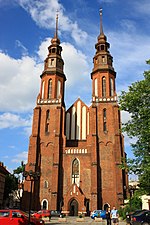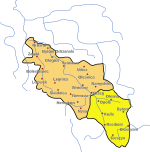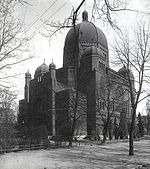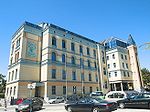Opole Cathedral

The Cathedral of the Holy Cross (Polish: Katedra Podwyższenia Krzyża Świętego) also called Opole Cathedral is a religious building affiliated with the Catholic Church that serves as a parish church and the cathedral city of Opole in Poland. The church belongs to the parish of the Holy Cross in Opole in the deanery of Opole, part of the Roman Catholic Diocese of Opole (established in 1972). On April 3, 1964, the temple was entered in the register of regional monuments of Opole under number 763/64. The current church was built in the fifteenth century on the site where before there was a structure of the eleventh and thirteenth centuries. It was rebuilt several times. With towers with a height of 73 meters is the tallest structure in the city. In the temple there is a painting of the Virgin of Opole, brought there permanently in 1702. The Cathedral contains the Piast Chapel, which is the burial site of Duke Jan II the Good of the Piast dynasty.
Excerpt from the Wikipedia article Opole Cathedral (License: CC BY-SA 3.0, Authors, Images).Opole Cathedral
Plac Katedralny, Opole Stare Miasto
Geographical coordinates (GPS) Address Website External links Nearby Places Show on map
Geographical coordinates (GPS)
| Latitude | Longitude |
|---|---|
| N 50.6703 ° | E 17.9203 ° |
Address
Katedra pw. Podwyższenia Krzyża Świętego
Plac Katedralny
45-007 Opole, Stare Miasto
Opole Voivodeship, Poland
Open on Google Maps











